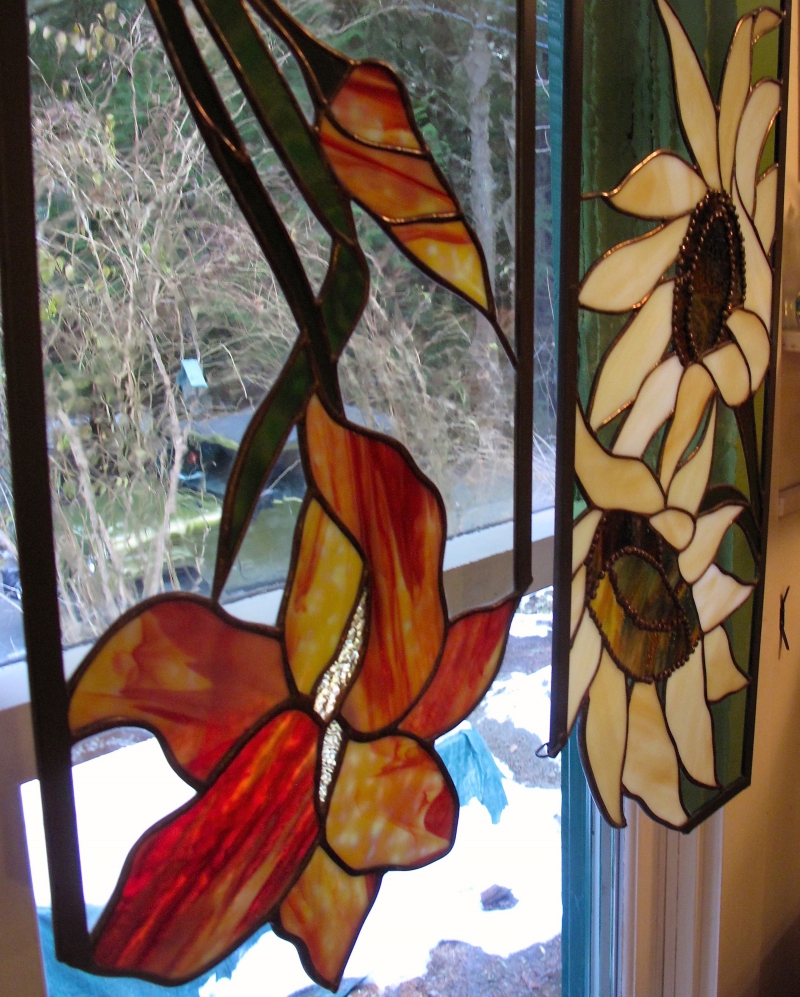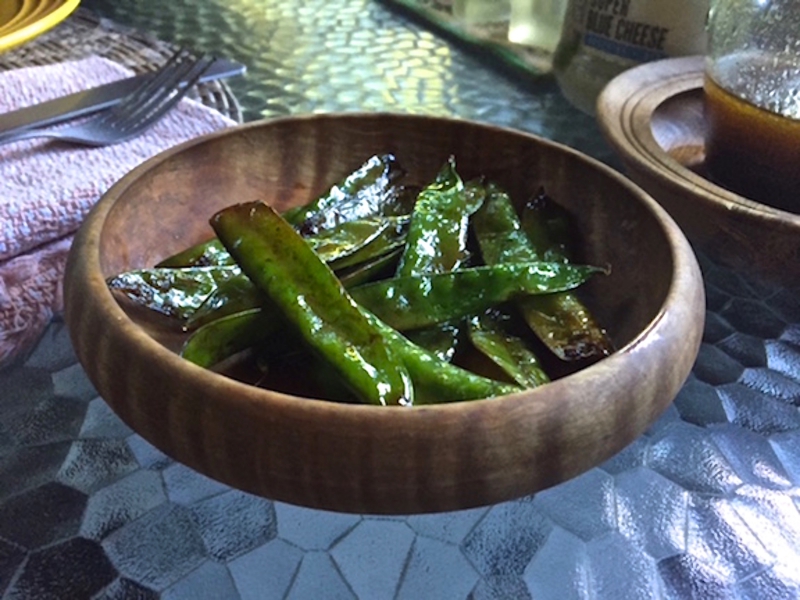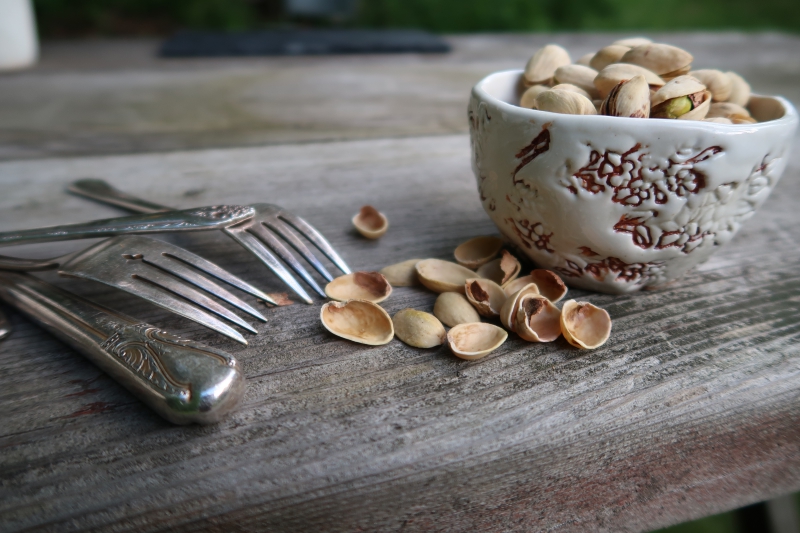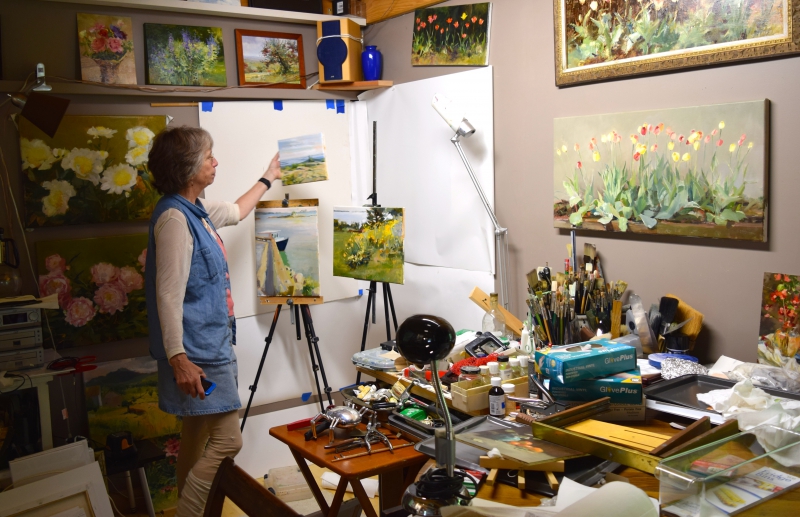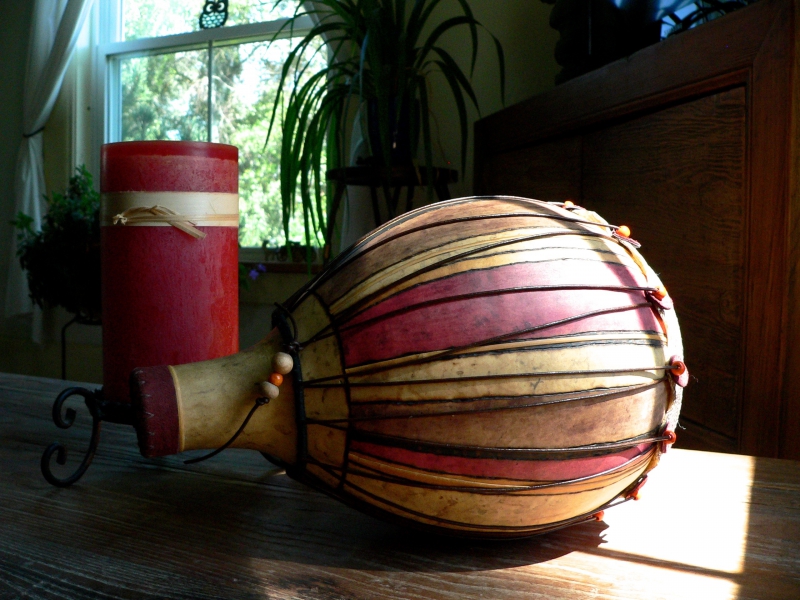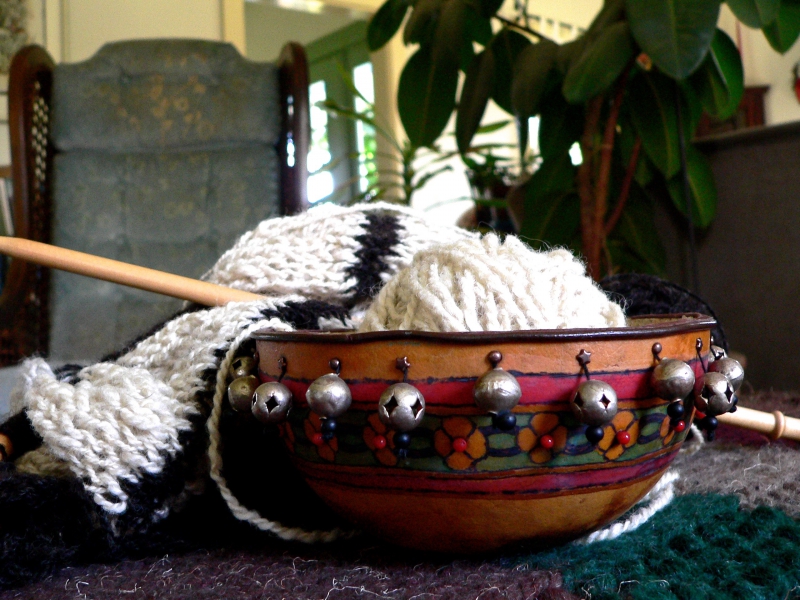By Ann C. Landenberger
Beautiful, functional and now local. Using handmade objects in the home continues to be a pleasure. Now with emphasis on the benefits of upcycled, recycled, and environmentally green artwork, careful selection allows us to be socially responsible too. The fact that buying from Vermont artists puts money back into the Vermont economy makes this an even better action for the homeowner, the artist, and the community.
— Martha Fitch, Executive Director, Vermont Crafts Council, which celebrates 27 Years in 2017! Fall Open Studio Oct 14 & 15. Information: http://www.vermontcrafts.com/OSW/fallOSWForm.php
At first blush, Putney and her neighboring towns look merely sleepy and sweet. This is quintessential Vermont, replete with the charm of rustic barns and fertile farms. But, of course, Putney is home to the oldest continuing craft studio tour in North America, and that flat-out rocks. For 39 years, myriad artists and crafters have opened their doors here to visitors from the region and well beyond for Thanksgiving weekend. We’re all invited behind the scenes, under the hood, and into new worlds where we spend time with many of Vermont’s most powerfully creative voices, and it’s a tradition we love. We wondered, though, what these artists do with their time around the tour, when their studios can be messy or in full-tilt production. How is life lived when we’re not around? What does this life—this continuing, evolving, exciting process—look and feel like from within?
Here are seven of these creators in their own words.
Julia Brandis
‘Living by a brook is interesting…’
In Westminster, stained-glass artist Julia Brandis, a 10-year tour participant, lives in palpable tranquility. At a wood slab kitchen counter lit by two handsome hanging lamps Brandis created for the space, she explains that “living with stained glass is about colored light. It creates a different atmosphere. The changing light is mood-altering. It’s natural and flowing.”
Having first felt the impulse of Tiffany, Brandis was soon inspired by Frank Lloyd Wright and Charles Rennie Macintosh, by Art Nouveau and the Arts and Crafts movement. That’s evident throughout, especially in her lampshades, where curves meet straight edges as the brook outside her home meets the road.
“Living by a brook is interesting,” Brandis reflects, “because I see how land is constantly changing over time.”
Her work is inspired by nature. Some designs are organic; others are much more linear. But even within the linear, trees and mountains emerge, and water images course through much of Brandis’s work. In her living room, in lieu of a drape, an elegant panel covers a window. The verdant landscape beyond only enriches various shapes and shades of green. One can imagine how stunning that picture must look in the winter against a stark, white landscape.
“It’s interesting to live with pieces even if only for a brief time. I notice things: colored light that changes at different times of day with different angles of sunlight. Sunlight changes at different times of year and I change with it,” Brandis says.
Tom Goldschmid
Making art not to be observed but to be used
In Brandis’ neck of the woods one finds the bucolic home of Tom Goldschmid and his wife, the writer and mosaic artist Kathy Leo. On the tour for the first time this year, Goldschmid offers his succinct philosophy:
“Instead of our living with art, we are inviting art into our living.”
Goldschmid came to the area in 1971, an early immigrant in the last half century’s back-to-the-land movement. Since then, he says, “My whole working life has been some form of woodworking.”
From early days as a sawyer’s assistant in Saxtons River through his work in architecture, then 30 years of timber framing and now in wood turning, he has been plying form and function in found wood.
“Making these bowls is an extension of this place where we live. I’m taking the wood out of the groves here,” he explains. In conversation, he holds a piece of cord wood, scrutinizes it, and says, “Wait a minute. There’s a bowl here.”
For his finish, Goldschmid uses a mix of mineral oil and the wax from bees nurtured on the property, which is resplendent with gorgeous and functional gardens, old structures and new.
He says he doesn’t make bowls to be observed. “I make them to be used. My hope is to make something beautiful that you pick up every day and that is a part of your life.” Clearly that’s what happens in his home, where hand-turned bowls are ubiquitous—they take liquid and yogurt, pesto and wild, dark blueberries.
What determines a bowl’s fate? “When I bring a bowl in and Kathy touches it, if it feels right she’ll say, I just want to keep this bowl.”
And that one’s not for sale.
Fiona Morehouse
‘Art is like grace from the grit of life…’
Fiona Morehouse lives up West Hill Road in an inviting down-the-slope home with a spiral staircase to the highest level and a yurt at the bottom-most. It’s woodsy and inventive, full of life, warmth, and art.
In her second year on the Putney tour, Morehouse talks about art and craft creating beauty while enhancing everyday living.
Both a painter and a potter, she says it’s not easy to part with a painting. She can part readily with ceramics, though, as “clay is utilitarian. Clay is the earth we walk on. It’s a direct connection to human experience.”
“For me,” she says, “art is like grace from the grit of life. You know you’re always going to have dishes, you’re always going to have laundry, so how can you make those experiences more artful? How can you bring grace into the mundane?”
Morehouse brings out a muffin tin. A dozen cups fused together with robin’s egg blue glaze. And she jokes that her kids can’t stand the zucchini muffins she bakes in them. Something to do with the elimination of sugar.
“My life aesthetic is wabi-sabi which, according to Utne Reader, is everything that today’s sleek, mass-produced, technology-saturated culture isn’t. It’s the singular beauty in something that may first look decrepit and ugly,” Morehouse explains.
She says architect Tadao Ando adds: “Through wabi-sabi, we learn to embrace liver spots, rust, and frayed edges, and the march of time they represent.”
The concept resonates through Morehouse’s art and home, where the yurt boasts hanging panels of recycled window sashes—and where one really can’t distinguish old from new.
Bob Burch
Serendipity in the life of the glass
BOB BURCH lived on a commune up north for a while in his early Vermont days. He’d wended his way through pottery and into glass blowing—all self-taught. Now, in his late 18th century home, he showcases not only his own work from 40 years of glass blowing, but also that of his three children: a glass blower, a photographer, and a ceramicist.
A founding member of the Putney craft circuit, Burch reflects on what work stays at home. It’s the pieces he really likes or those he wants to continue to learn from and develop. In the end, he says, his heart and his wife, Nancy Gagnon, determine what ends up on one of the many shelves of both functional glass and show pieces: perfume bottles, vases, lamps, garden sculptures, paperweights, hand-blown cups, and myriad one-of-a-kinds.
A clear glass flask with a stopper holds Gagnon’s homemade raspberry cordial.
“Living among my art, I let the glass talk to me,” Burch explains. “There are little hidden designs and directions in all the pieces.”
Glass blowing is serendipitous work, as Burch describes it. It takes a direction all its own as he shepherds its creation, inspired as always by nature in its broadest realm.
“People to trees to flowers. Things that are pleasing to the eye,” he says.
Ken Pick
The potter through his purpose
In the garden of potter Ken Pick, one finds statuary and small-scale tables painted in brilliant colors: bold and geometrical.
Wall platters on Pick’s barns offer an enhancing element to the garden. With these there’s color all through the year, the artists says.
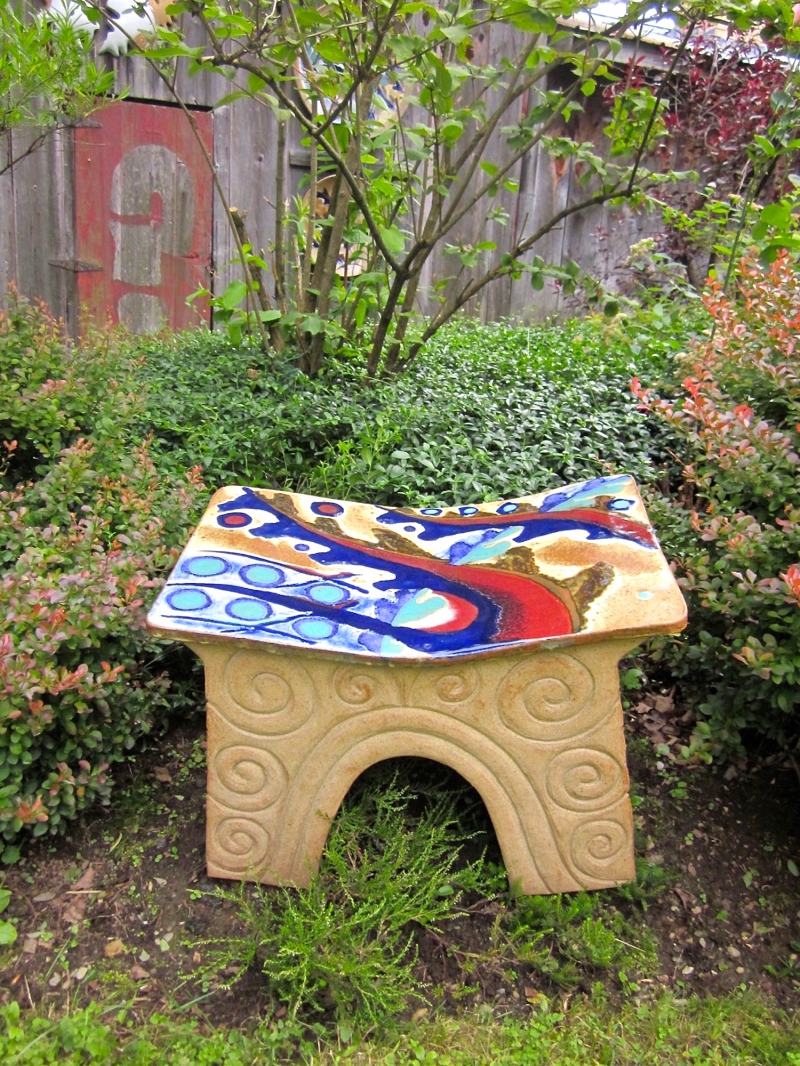 One can imagine how exquisite the platters will look on weathered barns surrounded by stark winter white.
One can imagine how exquisite the platters will look on weathered barns surrounded by stark winter white.
“There’s a thread through all my work that goes right back to my childhood,” Pick explains. “Right back into the sandbox, right back into the backwoods I wandered. If I stop to consider the energy I put into my work, it goes all the way back to that.”
In much of what Pick keeps at home the human figure emerges. Again, he says, that energy goes back to his origin.
“I keep pieces around that I’m still drawing from, that I need to look at to see how something works in the environment,” he says. “If I’m still learning from it, I don’t want to sell it yet. There are pieces all around that play that role for me.”
Deborah Lazar
Dancing her way across the canvas
Like several of her colleagues, painter Deborah Lazar came to southern Vermont in the early 1970s. She talks easily about her work: “All my brush strokes come from my breath.”
A dancer, Lazar says she’s uncomfortable walking a straight line, and this shows in her work. For effect, perhaps, or more likely because she just needs to, she contracts and cantilevers her torso over her pelvis. This is an artist who paints from the core of herself.
Surrounded in the living room by a range of canvasses, Lazar calls her style impressionist realism. She paints from life in situ, inspired by direct observation.
Lazar shows a wall of paintings here, each of which has a special place in her head and heart. She points to the one of her mother’s backyard. “I’m going to cry,” she whispers.
In July she hit the Maine coast and returned with a haul of new paintings, among them a canvas of E.B. White’s cottage at Blue Hill. The artist is recognized in several plein air competitions, and her influences are evident. Mingled with her own work are a Vermeer print and a Singer Sargent. She names others, but the key inspiration is clear in the light and the movement of life she captures in her paintings.
Kim Grall
‘Gourds are the perfect medium…’
In Westminster Station, multimedia artist Kim Grall works with gourds. Their range reflects her eclectic pursuits: painting, drawing, music, photography, printmaking, carving, fiber arts, and gardening. And her love of birds.
“Gourds are the perfect medium for embracing all of these, Grall explains. “Throughout the world and its civilizations gourds have emerged as food, utilitarian objects, musical instruments—everything from bowls to birdhouses.”
Raised on her property, the gourds live happily throughout Grall’s home. Some are large, others dainty; some are painted subtly, others more gaily; many are decorated with beads and whimsy.
A gourd bowl becomes more than just something to hold your yarn, she says:
“It’s smooth and warm to the touch, it’s earthy and brings a burst of pleasure every time my eyes settle on it. A drum resting on a dresser invites someone to pick it up and play their hand against it. Little keepsake boxes provide a beautiful way to protect jewelry or keys or other small things you want to keep safe.”
Reflecting on the pleasure of living with art, Grall adds, “Why not have the things you use every day be something more: something that brings delight through color, shape, or texture.”
For more information, visit http://www.putneycrafts.com. (Once there, sign up for the tour’s email alerts and be entered to win a $50 gift certificate.)


